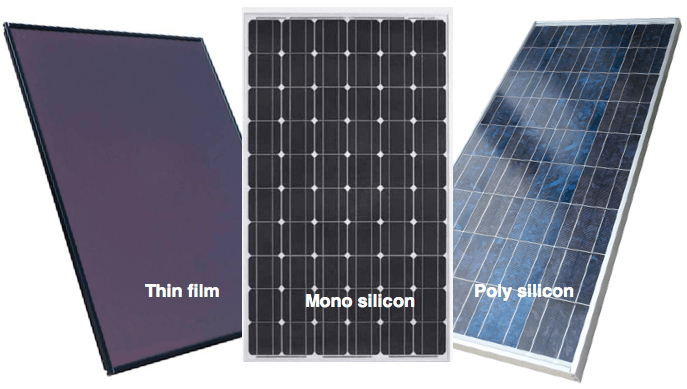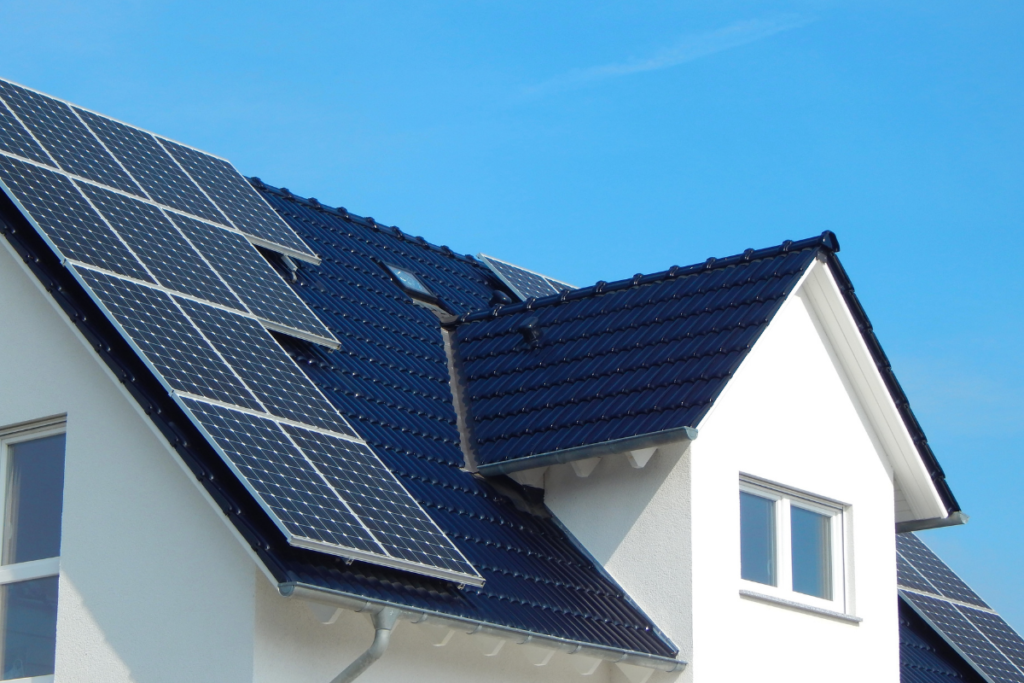Solar panels are made of crystalline silicon or thin-film and therefore those are the two main types of solar panels that are used in rooftop and outdoor installations, crystalline silicon, and thin film.
Crystalline silicon solar panels are the most common, they have the appearance of blue or black rectangular grids of smaller squares. These little squares are silicon solar cells and are connected in series to form a circuit. The more cells that are connected in series, the more electricity the system will produce.
There are two core types of crystalline, monocrystalline and polycrystalline silicon: Monocrystalline solar silicon is made by growing a single crystal of the best purity and highest efficiency. Polycrystalline is made by pouring molten silicon into a mold; Due to this construction, however, the crystalline structure is formed imperfectly, creating boundaries where the crystal formation is interrupted, this gives polycrystalline silicon its unmistakable grainy appearance, since the gem-like model stands out, polycrystalline is less efficient, but also cheaper than monocrystalline. Another type of thin-film is more traditionally used in large utility facilities. The semiconductor is deposited on glass-plastic substrates or a metal sheet, it is very flexible and light, which is why it is used in cars with curved roofs and other unique installations.
The other type of thin-film is more traditionally used in large utility facilities. The semiconductors are deposited on glass, plastic substrates, or metal. It is very flexible and lightweight and therefore is used in cars with curved roofs and other unique installations.

Most solar panels consist of solar cells with a glass layer at the front and a protective film on the back, it is no longer necessary. Some panels are also frameless and choose to layer solar cells between two pieces of glass or use sturdier backing films that don’t warrant a frame – keep up with the world of solar energy so you don’t miss out on the latest news.
The earth receives 25 times more energy from the sun than we use in the world every day. To use this energy, we use solar panels.
The panels consist of two simple elements made of silicon and silver. A solar panel usually consists of many individual solar cells; the solar cells are actually pieces of silicon that have been cut out. Most of the solar cells in the world are made of a material called silicon, which is a very common element. Gallium arsenide is very often used in high-end commercial and military solar cells, so it is the photovoltaic effect that creates electricity in solar panels.
This effect was discovered earlier, but it was actually Albert Einstein who first described it, simply put, that these materials can absorb energy from light. So this means that the energy in the light has been converted into excess electron energy, and the art of making a solar cell is to recapture this excess electron energy generated by light and use it so that photons of the sunlight reach the solar cell. There are two layers there, they make an electron jump between the two layers, and you can imagine one of them is the positive electrode and the other is the negative electrode like you have in a battery.
Electricity is the flow of electrons through a conductor so every time you use electricity you are basically using a flow of electrons, if the battery is charged there and not connected to anything, the energy is just waiting. I mean, if there is no conductor between the two layers, you are not getting any power at all. Therefore, the conductor is essential for the solar module to function and the more efficient the conductor, the better the conductor. This conductor wastes less heat and means there is more power available for your application than if you were to use a faulty conductor, you basically wouldn’t get anything out of the cell which is why you really need to consider a good one.

Erzsebet Frey (Eli Frey) is an ecologist and online entrepreneur with a Master of Science in Ecology from the University of Belgrade. Originally from Serbia, she has lived in Sri Lanka since 2017. Eli has worked internationally in countries like Oman, Brazil, Germany, and Sri Lanka. In 2018, she expanded into SEO and blogging, completing courses from UC Davis and Edinburgh. Eli has founded multiple websites focused on biology, ecology, environmental science, sustainable and simple living, and outdoor activities. She enjoys creating nature and simple living videos on YouTube and participates in speleology, diving, and hiking.

